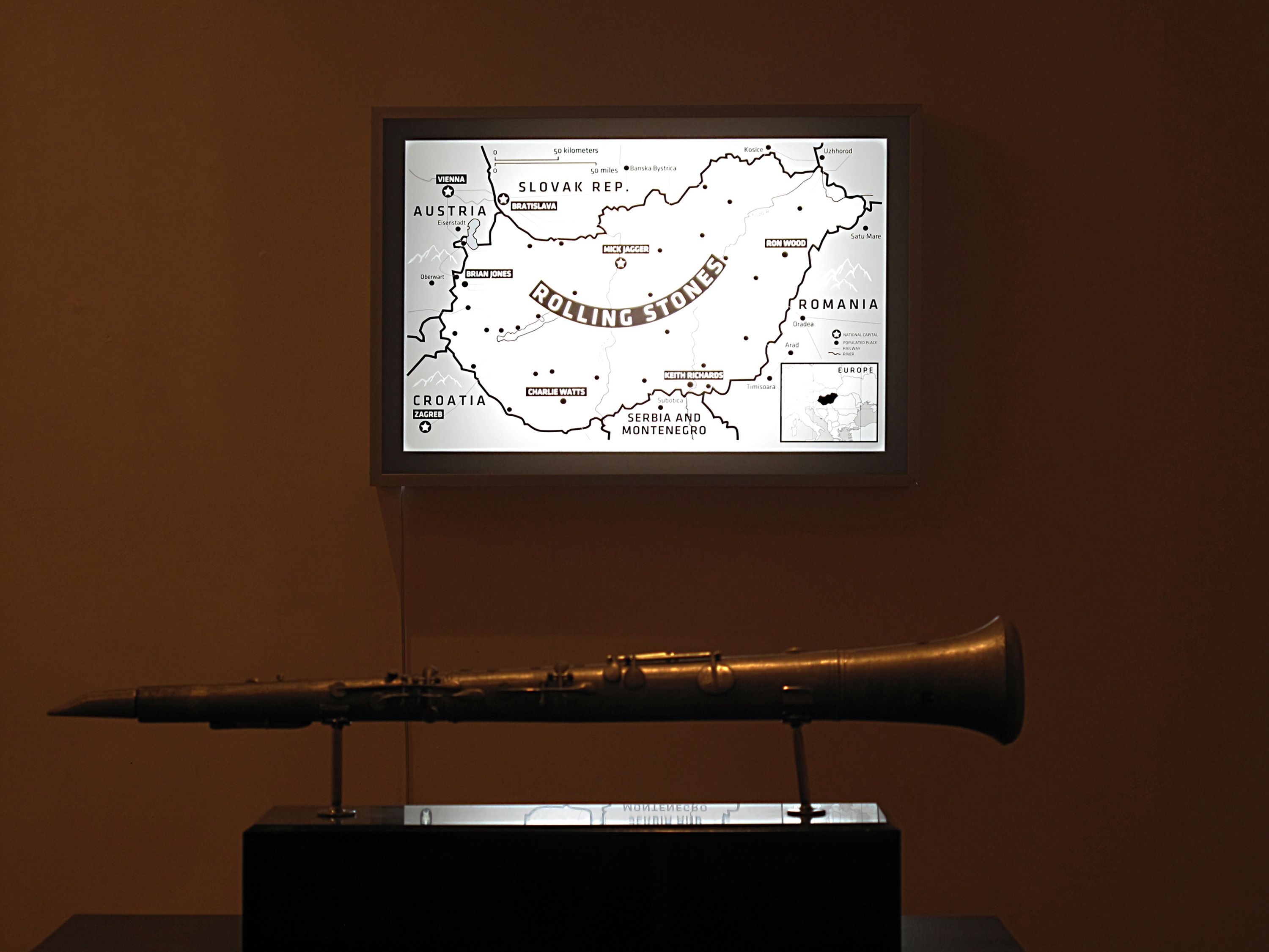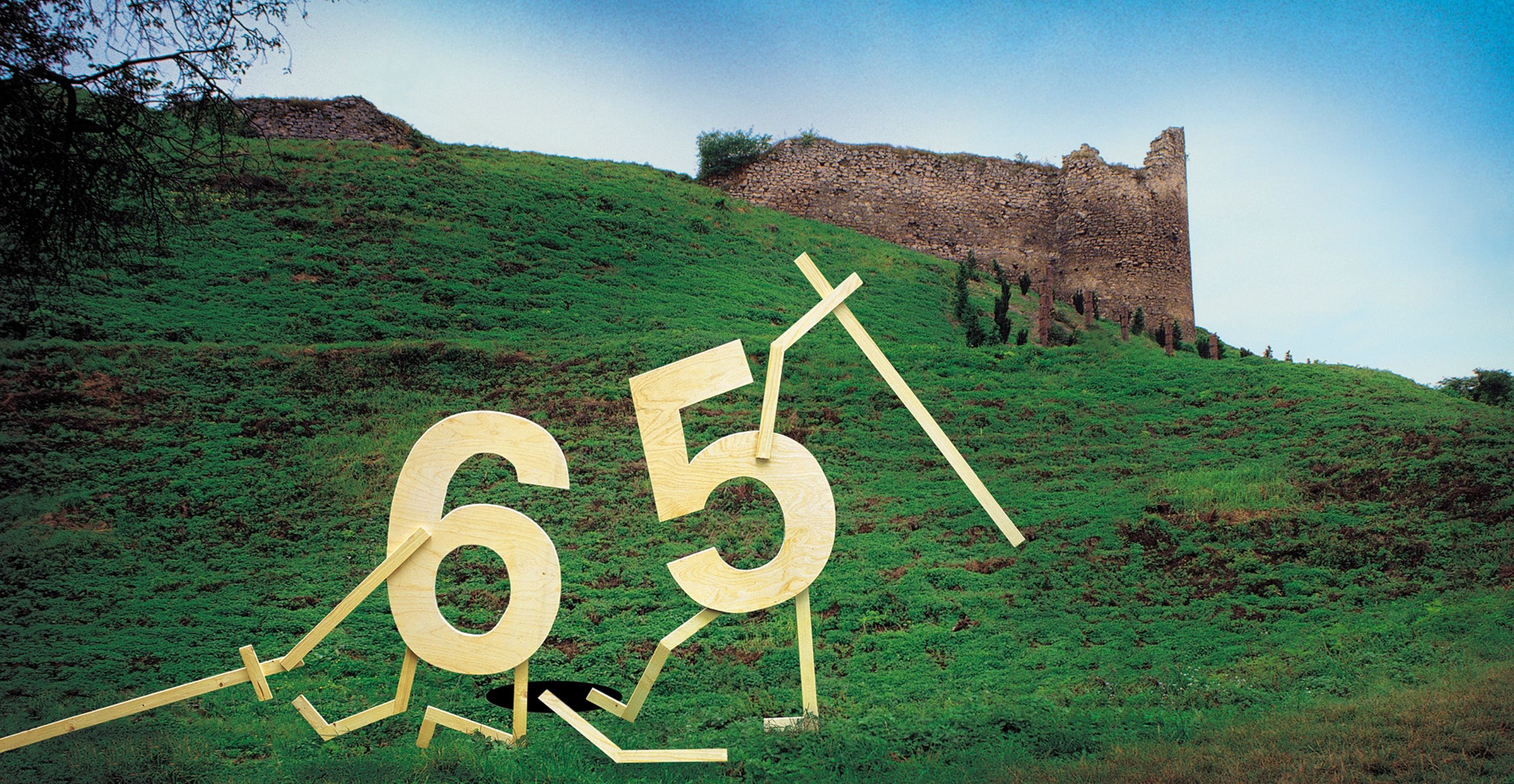Gábor Gerhes
Sound of Song
| Venue: | acb Gallery |
| Date: | Oct 21 – Nov 18, 2011 |
Description
The works of Gábor Gerhes, who began his career as an artist in the late 1980s, have focused on visual representation from the very beginning. His photos and installations of carefully staged composition show everyday, banal scenes and objects, which, through their manner of presentation, bear cultural reference. His works repeatedly engage the themes of present and recent past, high and pop culture, as well as language and its relationship with visuality.
The title of the exhibition featuring Gábor Gerhes’ latest works may bring to mind nostalgia, tradition-seeking, and kitsch. In the thematic units of artworks presented at the exhibition, these keywords indeed surface, from various approaches, depending on the context. Gerhes’ works are grouped around individual themes (God, Homeland, Enemy) in all three exhibition rooms of the acb Gallery, using various media – oil painting, photo, video, and object.
The selection of works, which also directly reflects on the title of the exhibition, explores – through visual and subject references – the issue of national self-identity, which has been a constantly engaged topic in the past two decades. Gerhes offers existing and fictive examples from the past and present of both invented traditions that have been elevated to official status in a program-like fashion, and the representational forms of these traditions. Such is the fact – as leaked by Gerhes, and duly supported by photo documentation – that a Hungarian astronaut set foot on the moon (Hungarian Moon). Another example is the lead sculpture featured as a central piece of the exhibition, which depicts what is known as the Hungarian clarinet-tárogató (Alchimia Pannonica). While the clarinet-tárogató is commonly known as an ancient Hungarian wind instrument of great past tradition, it was only actually patented in 1899. The legends built around it – and their recent revival – have been artificially generated as part of national propaganda.
The series entitled Every Image Is Enemy addresses the relationship between art and cultural politics. Each piece of the series is a reconstruction of an abstract painting that appeared in the caricatures of Ludas Matyi (the official humor magazine of the Kádár Era), which aimed to mock the visual art exhibitions of the day. Abstraction was considered by cultural politics as the “Entartete Kunst” of the era, whose contemptibleness was periodically impressed upon the masses by the caricatures of this satirical, seemingly (but not actually) opposition-oriented magazine. Gerhes’ series focuses on the special and hidden mechanisms of constraining artistic freedom through the means of cultural politics.
The question asked by the works – photos and objects – on display in the third exhibition room is: does faith bring enough joy? This group of works illustrates the external features and representational characteristics of an imagined church (Silent Church).
Special thanks to Pál Richter, musicologist and Founding Head of the Folk Music Department of the Liszt Academy of Music.

